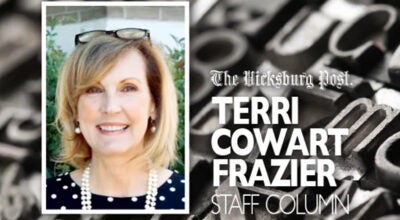Park’s monuments help tell story of our nation’s history
Published 7:38 pm Thursday, September 24, 2020
Last week, after our old 27-inch monster TV gave up the ghost and we switched to the 31-inch flat-screen we inherited from my mother-in-law, I decided to take advantage of a free 30-day trial for a streaming service to see what it has to offer.
For all you technically illiterate folks out there like me, streaming is a technology for transferring data so that it can be received and processed in a steady stream. It allows you to go on the Internet and see something going on live as it happens.
But I’m getting away from my story.
As I was saying, I have been taking advantage of the streaming service (I won’t say which one) Wednesday night when I came across a documentary on the Smithsonian Channel called “Civil War 360,” which covered the Civil War and its origins from the sides of slavery, the Confederacy and the Union.
Although I haven’t yet seen the third installment involving the Union, I must admit it made me think about a lot of things, which is something people — and definitely politicians — shouldn’t do.
I began thinking about the controversies over the removal of Confederate monuments across the South and the concern about the potential loss of similar objects in the Vicksburg National Military Park and other such state and federal battlefield parks that commemorate the battles and those who fought and died in them.
I’ve been to three national battlefield parks — Vicksburg, Shiloh in Tennessee, and Lookout Mountain Battlefield in Lookout Mountain, Tenn.
Shiloh was in many ways a personal trip. My great-great-grandfather was a Confederate soldier killed during the first day of the battle. While I have expressed in previous columns that I am not proud he fought to preserve slavery, I was interested in trying to determine his final moments as an infantry soldier.
I have no problem with communities removing Confederate statues and monuments where no battles were fought. These were, as many have said, erected as an attempt to demonstrate a certain class was in power. If you want proof of that, read James Gill’s “Lords of Misrule,” a book about the connection between Mardi Gras and politics in New Orleans that discusses the violence of the Reconstruction era in the Crescent City and the white residents’ attempts to keep power during that period.
The monuments, statues and informational plaques in parks, however, are another matter.
When you visit the Military Park here, or at Shiloh, Lookout Mountain, Gettysburg or any other battlefield park, they tell a story and give a sense of place. Without a plaque telling the story of the Railroad Redoubt, how would visitors know that after two bloody assaults on the fortification Maj. Gen. Ulysses Grant decided to put the city under siege?
The monuments at the national parks tell the story of how we became a nation. The Civil War and its origins is not a pretty story, but it is something we need to learn and remember. Removing monuments doesn’t destroy history, but it makes it hard to learn and that is a shame.
John Surratt is a staff writer for The Vicksburg Post. He can be reached at john.surratt@vicksburgpost.com.





